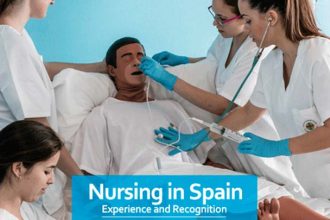How to Get the Nexora Scholarship (for Architecture Studies in Spain)
Quick summary
To become an architect in Spain you typically follow a bachelor + master route (Grado / Máster habilitante), apply through Spain’s admissions channels (Spanish students take EBAU; international students use UNEDasiss/PCE), prove Spanish language skills (usually DELE B2 or equivalent), submit a portfolio / specific tests if requested, get an official acceptance letter and then apply for a student visa. uchceu.comUNEDdele.org
Nexora is committed to supporting talented and motivated students in achieving their academic goals. To recognize excellence and potential, we offer three types of scholarships:
Full Tuition Scholarship – Covers the entire cost of tuition.
Partial Scholarship (50%) – Covers half of the tuition fees.
Annual Living Allowance – Financial support to help with living expenses.
Year by Year Scholarship grand
Notice : All admitted candidates are required to successfully complete a one-year college program in Spain, which includes Spanish language training and a university preparatory course. The cost of this program is fully covered by the Nexora Scholarship. Students must earn the necessary qualification to enroll in their chosen field of study; otherwise, their scholarship for the second academic year will be discontinued.
Academic Year Scholarship Basis Requirements Year 1 Entrance exam + Interview High performance leads to higher scholarship Year 2 Renewal phase Language proficiency + university enrollment Year 3+ Continuation phase Maintain GPA + responsible academic behavior
1) Check basic eligibility & read the rules
Read Nexora’s Scholarship Regulations and the application procedure carefully before you apply (all conditions, renewal rules, and required documents are there).
2) Register on Nexora (choose Architecture)
Create an account and complete the online application on Nexora’s site; select Architecture as your field.
3) Prepare & upload your documents (first submission)
Typical documents Nexora will ask for:
Passport scan / ID
High-school diploma / transcripts (translated + legalized if required)
CV / short academic resume
Motivation statement (1 page)
Portfolio preview (see portfolio tips below)
Recommendation letters (if available)
Upload everything through their portal and follow document format instructions. Nexora performs a formal document review as the next step.
4) Pay the application / document-review fee
To activate your registration you must pay the non-refundable application / document review fee (amount shown on the Nexora site; current public notice lists €150). Keep your payment receipt. Nexora – Scholarships Opportunities+1
5) Wait document review → get approval for the Exam
Nexora reviews documents (timeline noted on the site; expect an official reply — approved or not — from their admissions team). If approved you will be scheduled for the Nexora entrance exam.
6) Prepare specifically for Architecture (exam + portfolio)
Nexora Entrance Exam: includes general reasoning / academic questions tailored to your field. Review any Nexora exam guides and practice sample tests they provide.
Portfolio (critical for Architecture):
Prepare a clear digital portfolio (PDF) of 10–20 works: sketches, design projects, drawings, technical sketches, models, photos of built work (if any), and short captions (project title, year, technique, your role).
Include a brief concept statement about why you want architecture and your design interests.
Make a short portfolio preview (3–5 pages) for the Nexora initial application and have a full portfolio ready for interviews/university submissions.
(Portfolio content is standard practice for architecture admission — presentable, well-labelled work helps both the Nexora interview and university applications.)
7) Take the Nexora Entrance Exam
Attend the exam on the scheduled date (Nexora usually schedules exams within a few months after registration; check the exam email). Follow the exam rules and allowed materials.
8) Pass the exam → Online interview
If your exam score meets Nexora’s standard, you’ll be invited to an online interview (motivation, communication, portfolio review). Prepare by:
Practicing talk-throughs of 2–3 portfolio projects
Rehearsing why you chose architecture and Spain
Practicing common interview questions (goals, teamwork, design interests).
9) Selection & scholarship offer
Nexora selects winners by combined evaluation (documents + exam + interview). If chosen, you’ll receive a scholarship offer (full/partial/living allowance depending on ranking). Read the offer carefully (what is covered, obligations, renewal conditions).
10) Meet Nexora enrollment / Year-1 conditions (if awarded)
Important: Nexora requires admitted candidates to successfully complete a one-year college program in Spain (Spanish language + university prep) when the scholarship conditions say so — that program’s cost may be covered by Nexora (check your award letter). You must obtain the entry qualification (UNEDasiss/PCE or other) to be admitted into the Bachelor program; otherwise Year-2 scholarship renewal may be suspended.
11) Apply to Spanish universities (UNEDasiss / PCE / Admission)
UNEDasiss accreditation / PCE: Most Spanish universities require foreign diplomas to be assessed by UNEDasiss and sometimes the PCE (Specific Competence Tests) for Bachelor access. Start UNEDasiss early: you will need legalized/translated diplomas and to pay UNEDasiss fees.
Language certificate (DELE / SIELE): For most Bachelor programs taught in Spanish (including architecture), universities commonly require DELE B2 (or equivalent SIELE) as proof of Spanish proficiency before enrollment. Some programs accept in-house tests but DELE B2 is the widely recognized standard. dele.org+1
Apply to the specific Architecture schools that match your portfolio and interest (public or private). Public universities often use UNEDasiss + PCE results for ranking. Private universities may require direct application and their own tests/portfolio reviews. Academia Bravosol+1
12) Student visa & travel logistics
After you receive the university’s acceptance (and Nexora confirms support), apply for the Spanish student visa at the Spanish consulate in your country (you’ll need acceptance letter, proof of funds / scholarship, health insurance, passport, etc.) — start this early.
13) Maintain scholarship — renewals & obligations
Nexora scholarships are renewable but conditional: Year-2 renewal depends on language proficiency and successful enrollment (i.e., passing the one-year prep and getting registered at the university). Year-3+ renewals require maintaining the minimum GPA and responsible academic behavior (monitored by Nexora). Read the continuation conditions in the scholarship rules. Nexora – Scholarships Opportunities+1
Quick checklist (what to prepare now)
Read Nexora Scholarship Regulations (site). Nexora – Scholarships Opportunities
Create Nexora account & start application. Nexora – Scholarships Opportunities
Scan & translate (if needed) diploma, transcripts, ID. Nexora – Scholarships Opportunities
Prepare portfolio preview (3–5 pages) + full portfolio PDF.
Draft motivation letter and short personal statement.
Get recommendation letters (teachers / employers).
Save funds for the application review fee (€150 as posted) and UNEDasiss fees. Nexora – Scholarships Opportunities+1
Start DELE or intensive Spanish course (aim for B2). dele.org
Timeline (typical)
Register + upload docs → document review (up to ~10 working days) after payment. Nexora – Scholarships Opportunities
Exam scheduled within a few months of registration (Nexora email). Nexora – Scholarships Opportunities
If successful → interview within weeks → selection notice. Nexora – Scholarships Opportunities
Parallel: start UNEDasiss / PCE and DELE processes (these can take months). unedasiss.uned.es+1
Practical tips to maximize your chance
Polish your portfolio: clarity and narrative of each project matter more than quantity.
Start DELE prep now — language is often the main gate for admission. dele.org
Keep all documents legalized & translated per UNEDasiss instructions.
Save receipts of payments and correspondence with Nexora — they will ask for them later.
Short FAQ
Q: What entrance exams do I need?
A: Spanish students take the EBAU/EvAU/PAU (Selectividad) exam. International students usually register with UNEDasiss for credential assessment and may need to take the PCE (UNEDasiss Specific Competency Tests). spaineducation.infoUNED
Q: Which Spanish language level do I need?
A: Most universities ask for DELE B2 for bachelor programmes; some masters and top programmes request C1. If you don’t have a certificate, universities sometimes accept in-house testing or evidence of Spanish instruction. dele.orgUniversitat de Barcelona
Q: Do I need a master to practice architecture in Spain?
A: Yes — to be fully qualified to practice as an architect you usually need the Máster habilitante (the professional master) after the undergraduate studies. Universidad de Granadauchceu.com
Q: How do I apply for a student visa?
A: Apply at the Spanish consulate in your country with the official university acceptance letter (in Spanish), passport, proof of funds, health insurance and other documents listed by the consulate. Start early. Ministerio de Asuntos ExterioresBLS Spain Visa
Key official / useful links (references used)
UNEDasiss (international admissions & PCE information). UNED
Spanish university entrance (Selectividad / EBAU) overview. spaineducation.info
DELE (official Spanish language diplomas). dele.org
Spain consular guidance for student visas (example: Ministry of Foreign Affairs / consulates sites). Ministerio de Asuntos ExterioresBLS Spain Visa
Master habilitante in Architecture (example university programme pages). Universidad de Granadauchceu.com
(Additional practical guides and school pages were consulted for tuition, portfolio tips and work rules.) Arquitecto Puig de Ayguaviveshttps://www.educations.comReuters
Final checklist
1- Decide programme (public vs private / Grado + Máster or integrated).
2- Reach DELE B2 (or higher).
3- Prepare transcripts, apostilles, translations.
4- Create portfolio (10–20 selected works + descriptions).
5- Register with UNEDasiss (if international) / schedule PCE / take EBAU if in Spain.
6- Submit university applications and pay deposits.
7- Request official acceptance letter in Spanish.
8- Apply for student visa at your consulate.
9- Arrange accommodation, insurance, travel.
10- Arrive, register locally, get TIE, enroll and start classes.







